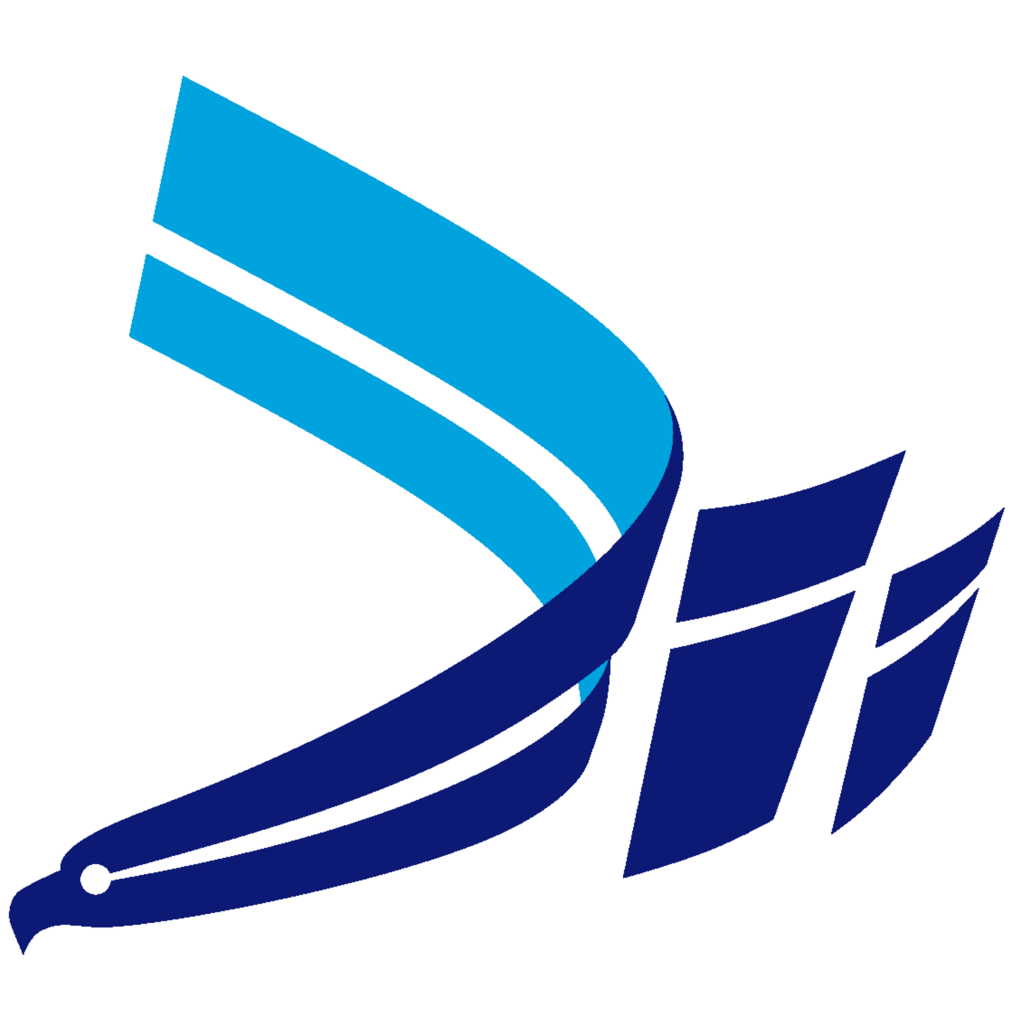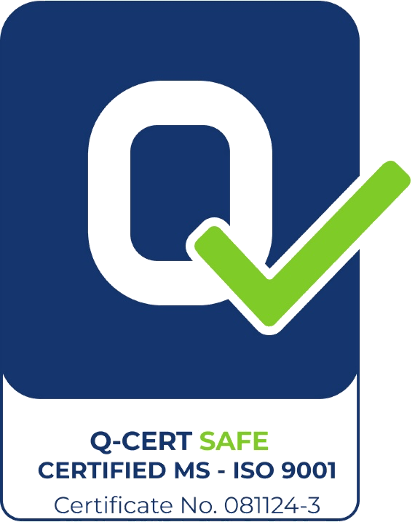
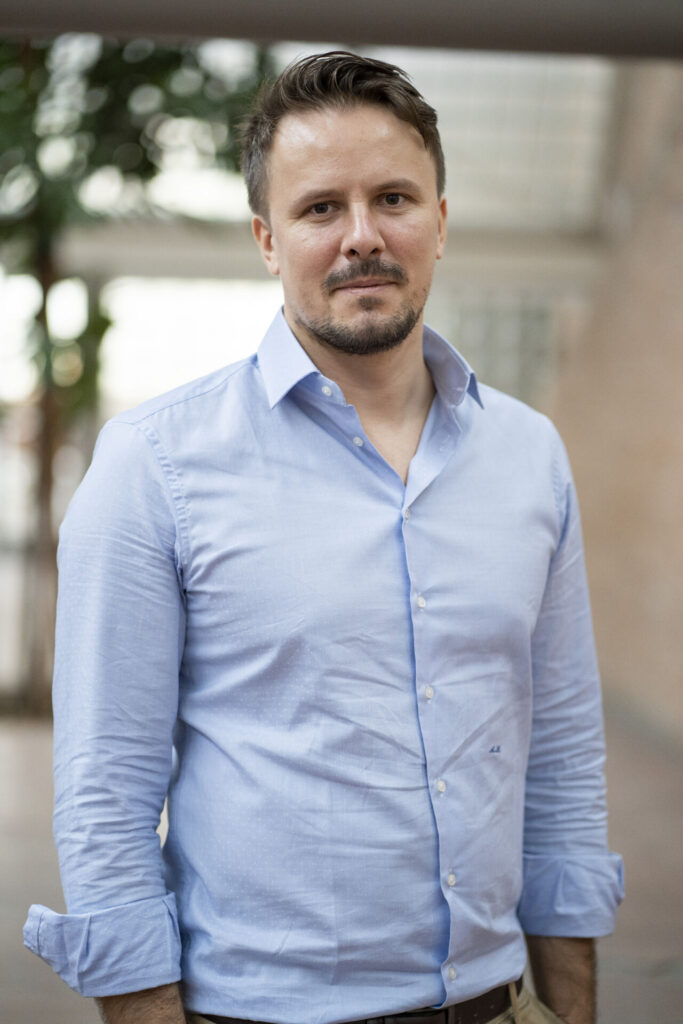
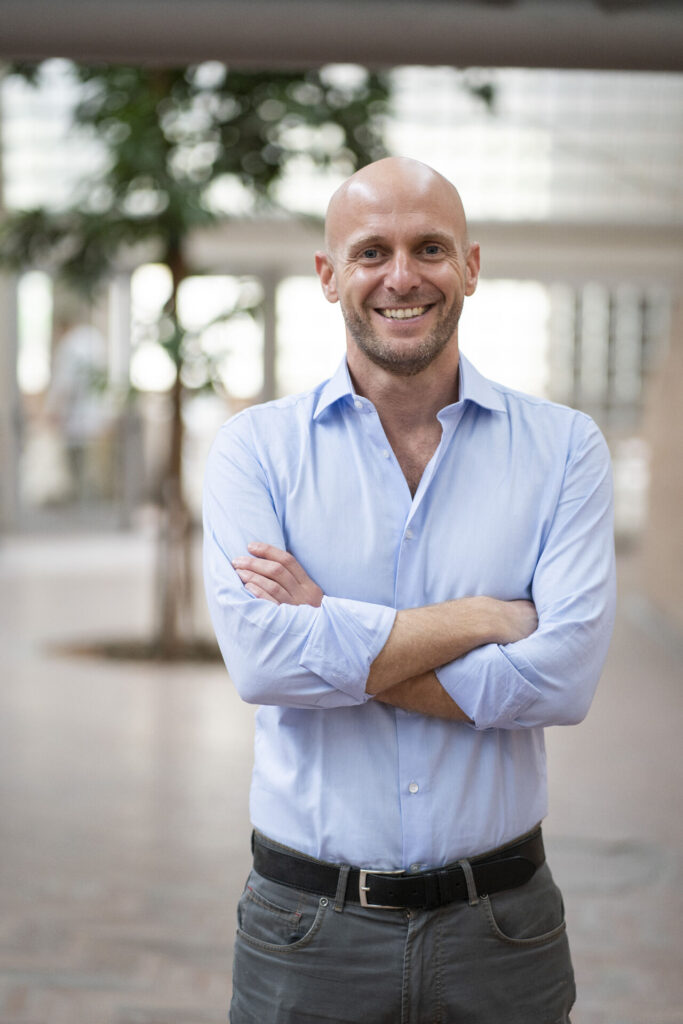
ITALIAN TECH FIRM REVOLUTIONISES TYRE SCIENCE WITH PHYSICS-BASED SIMULATION
In a nondescript business park on the outskirts of Naples, a team of researchers-turned-entrepreneurs is quietly revolutionising how the world’s leading vehicle manufacturers and motorsport teams understand tyre performance. MegaRide, founded by academic researchers from the University of Naples Federico II, has grown from a university spinoff to one of the most innovative players in automotive simulation technology.
The company specialises in physics-based modelling software that predicts tyre behaviour with unprecedented accuracy – crucial information for both racing teams seeking competitive advantages measured in milliseconds and vehicle manufacturers designing safer, more efficient cars for everyday drivers. Led by CEO Flavio Farroni, the company has expanded into what he describes as a ‘MegaRide holding’, comprising multiple specialised businesses, each targeting different segments of the automotive technology sector.
“We embrace an unconventional approach to startup building: we invest in organic and gradual growth, which keeps us independent from private funding and allows us to reinvest our revenues into the team and R&D projects fully,” says Farroni, who co-founded the company after conducting tyre research at the university.
FROM ACADEMIA TO INDUSTRY DISRUPTOR
MegaRide’s journey represents a new technology transfer model from academia to industry. Farroni acknowledges that this transition wasn’t without challenges.
“The main leadership challenges we faced along our journey were, first and foremost, gaining acceptance for our role as researcher-entrepreneurs – researchpreneurs – both within academia and in the market. In the beginning, neither was sufficiently advanced to recognise such a new and competitivefigure,” Farroni explains.
This ‘researchpreneur’ model has since become central to MegaRide’s competitive advantage. The company maintains close ties with universities and ensures a continuous pipeline of cutting-edge research that feeds into commercial applications.
“Our deep synergy with universities makes research and innovation our core mission. This allows us to explore methodologies and techniques that may not immediately apply to current products but lay the groundwork for future advancements,” explains Aleksandr Sakhnevych, MegaRide’s Chief Technology Officer
THE TECHNOLOGY: DIGITAL TWINS FOR TYRES
MegaRide’s flagship products, collectively known as the RIDEsuite, create what amounts to ‘digital twins’ of tyres. These physics-based models simulate how tyres behave under different conditions, predicting temperature changes, grip levels and wear patterns in real time with an accuracy that was previously impossible.
One of its most innovative products, weaRIDE, enables real-time tyre tread wear and chemical degradation simulation. This technology is particularly significant for electric vehicles, whose instant torque delivery creates new challenges for tyre durability.
“We were the first to develop a commercial thermal model for tyres, the first to create a multiphysics Pacejka-based model, and today, we are the first to introduce a wear and degradation model, weaRIDE, internationally awarded for its innovation. We try to be always a step ahead, and scientific research is our ‘secret weapon’,” Farroni says.
Sakhnevych explains that ensuring model accuracy across varied real-world conditions requires a multifaceted approach: “MegaRide ensures the accuracy and reliability of the weaRIDE model through a multifaceted approach. First, there is a continuous effort to enhance the physical fidelity of the model, leveraging a strategic synergy with universities and research institutions.”
He adds, “Additionally, a key focus is placed on improving data processing methodologies. Tyre models often face scrutiny due to the limitations in predictive accuracy, which are strongly influenced by the quality of the calibration data”
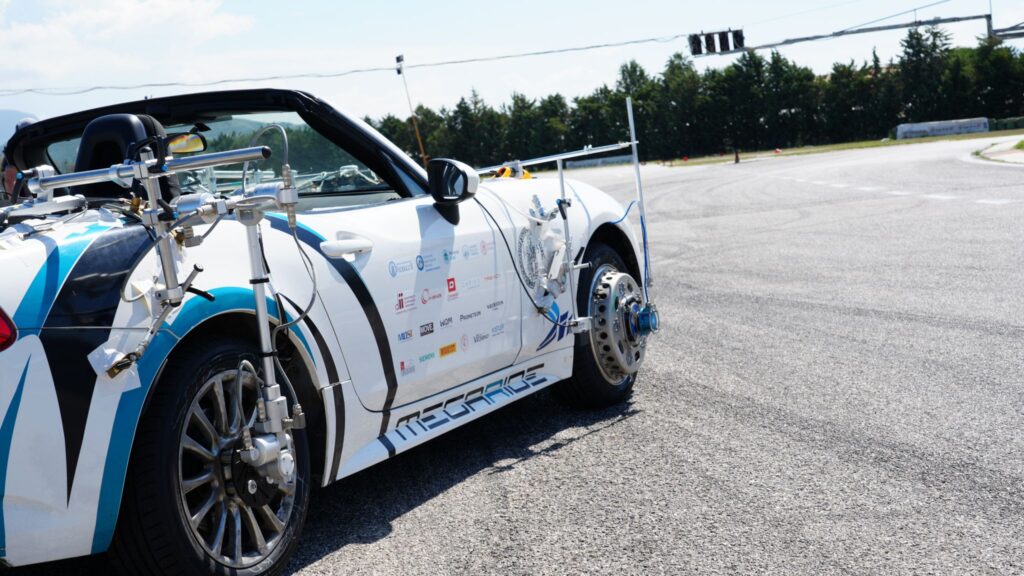
FROM SIMULATION TO MEASUREMENT: THE VESEVO SPINOFF
In 2018, MegaRide expanded its footprint by spinning off VESevo, a company focused on developing innovative testing equipment for tyre materials. VESevo’s flagship product enables non-destructive testing of tyre compounds, providing detailed mechanical property data previously unavailable without destroying the tyre. Andrea Genovese, CEO of VESevo, explains how the technology has evolved from its motorsport origins: “VESevo is evolving its motorsport-derived technology to enhance industrial applications, leveraging its versatility for real-time quality control in tyre manufacturing. Its non-destructive, non-invasive and rapid-testing capabilities allow each tyre to be analysed directly on the production line.”
This represents a significant shift in quality control for tyre manufacturers. “This innovation enables mechanical property testing to be performed not just on a sample basis but on the entire production, guaranteeing comprehensive quality assessment,” Genovese adds.
However, VESevo has faced regulatory headwinds in motorsport, particularly after the Fédération Internationale de l’Automobile (FIA) introduced rules limiting the use of its technology in Formula 2 and Formula 3. “Honestly, we were surprised by this regulatory change, as motorsport has always been a driving force in introducing innovations, especially when they enhance performance, spectacle and safety, benefiting all stakeholders involved,” Genovese admits. “VESevo is a perfect example of this, making the restriction even more unexpected.”
Rather than seeing this as a setback, VESevo has focused more on industrial applications. “By broadening our reach into new applications, we are not just navigating these changes, but we are turning them into opportunities to drive innovation forward,” Genovese says.
STRATEGIC ACQUISITIONS AND GROWTH
MegaRide has augmented its technological capabilities through strategic acquisitions, including the 2022 purchase of Wriggle Solutions’ intellectual property. This acquisition bolstered MegaRide’s capabilities in real-time tyre wear monitoring. “The acquisition of Wriggle Solutions’ intellectual property in 2022 has expanded MegaRide’s strategic line, accelerating the transition from purely simulation-based technologies to real-time, onboard vehicle sensing,” Sakhnevych explains.
This move has enabled MegaRide to develop virtual sensors that can estimate previously unmeasurable parameters like vehicle sideslip angle, tyre temperature and tread wear. These capabilities have applications for vehicle performance, safety systems and autonomous driving technologies.
MegaRide has also established key partnerships with major industry players. Its collaboration with Prometeon, an industrial tyre manufacturer, illustrates how the company’s technology is being applied beyond high-performance vehicles to commercial transport. “The deep link between us and Prometeon stems, first of all, from a shared vision between our two companies, strongly rooted in the value of research and its ability to create distinctive products,” Farroni says. “Within this framework, the use of physics-based development methodologies has led to the creation of advanced testing and analysis tools such as TRICK4TRUCK, which, leveraging data from heavy vehicles, provides a comprehensive characterisation of tyres.”
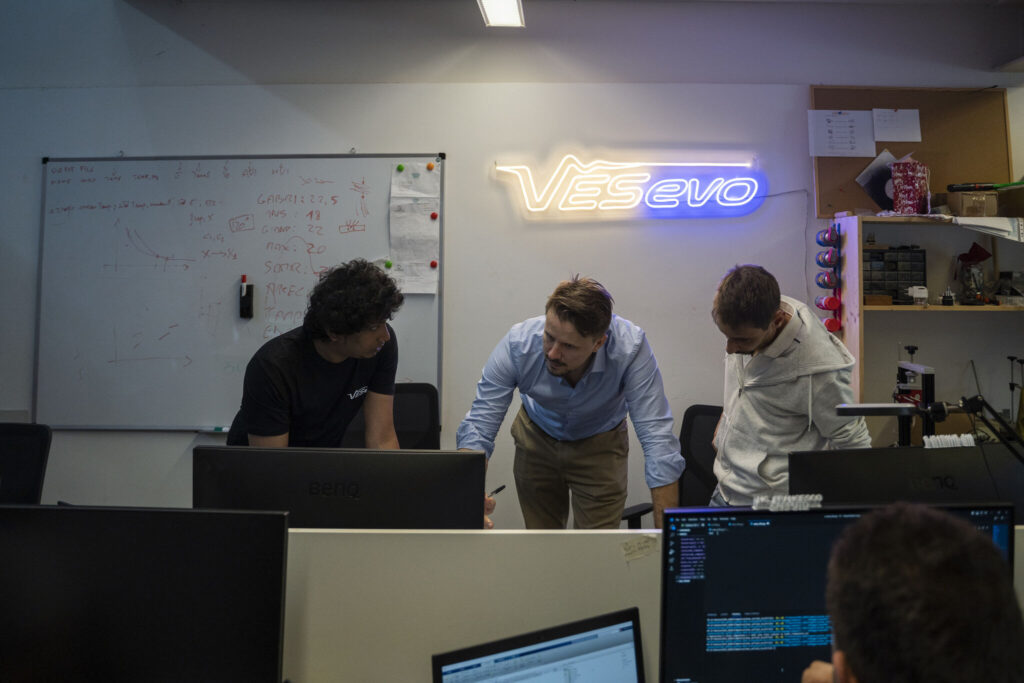
THE CHALLENGE OF SCALING HIGH-PERFORMANCE TECHNOLOGY
Transferring technologies developed for the extreme demands of motorsport to mass-market applications presents significant challenges. Sakhnevych outlines several hurdles: “One of the main challenges is cost, as motorsport applications rely on high-end sensors and powerful computing. To make these solutions viable for mass production, MegaRide focuses on leveraging existing vehicle sensors and optimising software to run efficiently on standard ECUs.” He continues, “Scalability is another hurdle, as consumer vehicles operate in diverse and unpredictable conditions. Ensuring robust performance across various road surfaces and driving styles requires extensive validation and adaptive modelling.”
Despite these challenges, MegaRide sees significant opportunities in the growing market for advanced driver assistance systems (ADAS) and autonomous driving technologies. Through its newest venture, RIDEsense, the company is developing virtual sensors specifically designed for these applications.
THE AI QUESTION
As artificial intelligence (AI) transforms industries worldwide, MegaRide maintains a measured approach to incorporating machine learning (ML) into its products. The company’s roots in physics-based modelling inform its perspective on AI’s role in tyre simulation.
“MegaRide leverages artificial intelligence and machine learning while staying true to its roots in physics-based modelling,” Sakhnevych says. “Our background in academic research, particularly in mechanical engineering, has shaped our expertise in model-based approaches. This allows us to develop compact, computationally efficient models that accurately replicate physical systems while maintaining adaptability across different vehicles and tyres.” He distinguishes their approach from purely data-driven methods: “Unlike purely data-driven methods, our approach enables prediction without extensive training datasets – simply by parametrising models using well-established physical principles.”
Sakhnevych sees AI as complementary rather than replacing physics-based models: “We see AI not as a replacement but as a complementary tool, where machine learning could help automate internal processes, enhancing output for our partners and refining our models where physical knowledge is limited, capturing minor inaccuracies that traditional physics-based models may not fully account for.”
DATA SECURITY CONCERNS
As vehicles become increasingly connected, handling sensitive data securely becomes increasingly important. MegaRide has developed comprehensive approaches to data security, which are particularly relevant to its onboard sensing technologies.
“MegaRide addresses data privacy and security concerns in tyre technology through a robust combination of encryption, secure data management protocols and role-based access controls,” Sakhnevych explains. “With the advent of onboard systems and the increasing use of smart sensors and real-time data analysis, MegaRide is dedicated to ensuring sensitive vehicle and driver information remains protected during the transfer between edge devices and the cloud.”
These measures include end-to-end encryption for data transmission and role-based access control systems, which ensure that different stakeholders – from manufacturers to fleet managers to drivers – only access information relevant to their needs.
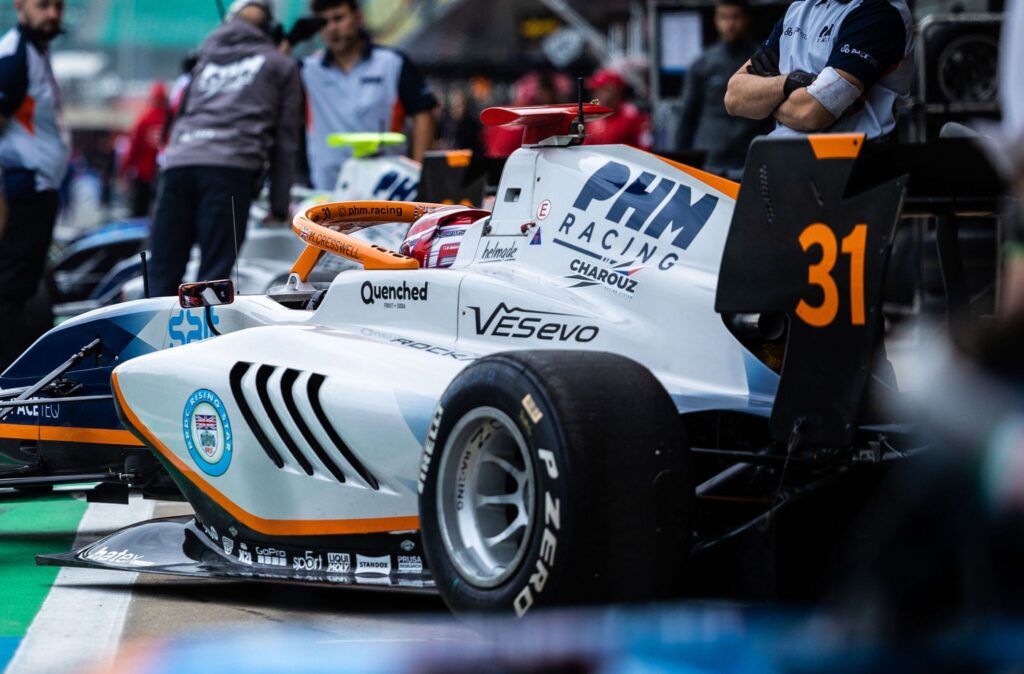
COMPETITION FROM INDUSTRY GIANTS
As a small company operating in an industry dominated by global corporations, MegaRide faces significant competitive pressures. However, Sakhnevych sees advantages in the company’s nimble structure. “As a small company, we benefit from leaner processes, faster decision-making and fewer bureaucratic hurdles: without the need for excessive reporting or long approval chains, we are responsive to market needs and accelerate innovation cycles,” he says.
MegaRide’s multidisciplinary approach also provides competitive advantages. “Unlike large corporations that can rely on specialised teams, we must continuously ensure we have the right mix of skills in-house while strategically collaborating with top-tier consultants and technology providers. This allows us to expand our capabilities and tailor solutions to specific industry needs, benefiting from a multidisciplinary approach while requiring continuous learning and adaptation,” says Sakhnevych.
The company’s academic connections represent another competitive edge. “Our continuous collaboration with universities keeps us at the cutting edge of research, allowing us to explore innovative methodologies before they reach the mainstream,” adds Sakhnevych.
TALENT ACQUISITION IN A SPECIALISED FIELD
Finding and retaining talent with the specialised skills needed to develop cutting-edge tyre models presents another challenge. Farroni describes the qualities MegaRide looks for in new hires: “We primarily look for people driven by passion – for technological innovation, value creation and the automotive and motorsport sectors.” The company cultivates talent through university collaborations. “Physics-based modelling skills are essential, and we strive to impart them to our students during their thesis projects, which serve as a stepping stone for recruiting the most promising talents,” says Farroni. Beyond technical skills, Farroni values market awareness: “Alongside these technical skills, we highly value the ability to engage with the market, steering the innovation of our products – something that has always set us apart.”
Building a cohesive team culture has been essential to MegaRide’s growth. Reflecting on the company’s early challenges, Farroni notes, “A major challenge was building a team composed of very young professionals and providing them with clear targets, a forward-looking vision, a strong sense of belonging and a shared spirit, all stemming from the awareness of creating something truly unique.”

THE FUTURE: EXPANSION AND DIVERSIFICATION
Looking ahead, MegaRide plans to continue expanding through organic growth and the development of new ventures within its holding structure. “The ‘MegaRide holding’ concept will allow us to diversify our strategies, expanding into various sectors we consider strategic,” Farroni explains. “MegaRide’s models are increasingly used by OEMs, tyre manufacturers and racing teams, and the technological landscape is moving towards a greater adoption of physics-based models like ours, driven by the growing use of real-time simulations.”
Each company within the holding structure has its strategic direction. “VESevo, originally founded to produce a portable device for motorsport, is now evolving – thanks to key strategic partnerships – into a provider of non-destructive testing solutions and quality control systems for tyres, directly integrated into production lines,” says Farroni. The newest addition, RIDEsense, targets emerging opportunities in vehicle automation. “The increasing onboard computational power of vehicles has led to the creation of a new company, RIDEsense, focused on developing ‘Virtual Sensors’ – real-time algorithms capable of estimating otherwise unmeasurable quantities and providing critical insights for ADAS and autonomous driving systems, which will be pivotal in tackling the mobility challenges of the coming years,” explains Farroni.
VESevo’s Genovese describes a similar approach to balancing immediate market needs with long-term innovation: “At VESevo, balancing short-term business goals with long-term research and development is part of our DNA. As an academic spinoff from the University of Naples Federico II and an innovative company, we follow the same path that MegaRide successfully pioneered, transforming cutting-edge research into commercially viable solutions while maintaining a strong focus on technological advancement.”
He elaborates on their dual-track strategy: “In the short term, we focus on delivering market-ready solutions that meet the immediate needs of our customers, particularly in motorsport and industrial applications. By working closely with teams and manufacturers, we ensure our technology provides tangible value and rapid returns, allowing us to sustain growth and reinvest in innovation.”
Meanwhile, the academic connection remains vital: “Our strong ties to the academic world allow us to act as a ‘bridge’ between research and industry. This close connection enables a constant exchange of knowledge, technology, expertise and skills, accelerating innovation while ensuring our developments translate into real-world impact,” says Genovese.
A MODEL FOR RESEARCH COMMERCIALISATION
MegaRide’s success offers a blueprint for commercialising academic research in highly technical fields. The company has carved out a unique position in the automotive technology ecosystem by maintaining close ties to academia while developing practical market applications. The company’s ‘researchpreneur’ model provides a case study in technology transfer that may be increasingly relevant as universities worldwide seek to translate research into commercial impact. MegaRide demonstrates that deep technical expertise can be successfully paired with entrepreneurial vision when the right structures and leadership are in place.
As vehicle electrification, automation and connectivity create new challenges for tyre performance and safety, MegaRide’s physics-based approach to simulation and testing positions the company to play an increasingly important role in the future of mobility. What began as academic research in a Naples university laboratory has evolved into a group of companies pushing the boundaries of what’s possible in understanding the complex interactions between tyres and roads – knowledge that underpins both the thrilling spectacle of motorsport and the mundane safety of everyday driving.

